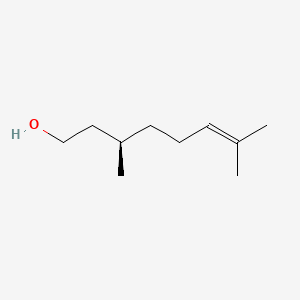| Authors | Title | Published | Journal | PubMed Link |
|---|---|---|---|---|
| Maia MF and Moore SJ | Plant-based insect repellents: a review of their efficacy, development and testing. | 2011 | Malar. J. | pmid:21411012 |
| Esmaeili A and Hashemi E | Biotransformation of myrcene by Pseudomonas aeruginosa. | 2011 | Chem Cent J | pmid:21609445 |
| Lombard J and Moreira D | Early evolution of the biotin-dependent carboxylase family. | 2011 | BMC Evol. Biol. | pmid:21827699 |
| Michlmayr H et al. | Characterization of two distinct glycosyl hydrolase family 78 alpha-L-rhamnosidases from Pediococcus acidilactici. | 2011 | Appl. Environ. Microbiol. | pmid:21784921 |
| Arifin AA et al. | The feasibility of growing cells of Saccharomyces cerevisiae for citronellol production in a continuous-closed-gas-loop bioreactor (CCGLB). | 2011 | Bioresour. Technol. | pmid:21835610 |
| Zore GB et al. | Evaluation of anti-Candida potential of geranium oil constituents against clinical isolates of Candida albicans differentially sensitive to fluconazole: inhibition of growth, dimorphism and sensitization. | 2011 | Mycoses | pmid:20337938 |
| Sekiguchi F et al. | Delayed production of arachidonic acid contributes to the delay of proteinase-activated receptor-1 (PAR1)-triggered prostaglandin E2 release in rat gastric epithelial RGM1 cells. | 2011 | J. Cell. Biochem. | pmid:21328464 |
| Anwar K et al. | COX-2 inhibition and inhibition of cytosolic phospholipase A2 increase CD36 expression and foam cell formation in THP-1 cells. | 2011 | Lipids | pmid:21181286 |
| Rose HL et al. | Comparison of eight methods for the extraction of Bacillus atrophaeus spore DNA from eleven common interferents and a common swab. | 2011 | PLoS ONE | pmid:21818364 |
| Goossens A | Contact-allergic reactions to cosmetics. | 2011 | J Allergy (Cairo) | pmid:21461388 |
beta-Citronellol
Beta-citronellol is a lipid of Prenol Lipids (PR) class. The involved functions are known as Glycolysis.
Cross Reference
Introduction
To understand associated biological information of beta-Citronellol, we collected biological information of abnormalities, associated pathways, cellular/molecular locations, biological functions, related genes/proteins, lipids and common seen animal/experimental models with organized paragraphs from literatures.
What diseases are associated with beta-Citronellol?
There are no associated biomedical information in the current reference collection.
No disease MeSH terms mapped to the current reference collection.
PubChem Associated disorders and diseases
What pathways are associated with beta-Citronellol
There are no associated biomedical information in the current reference collection.
PubChem Biomolecular Interactions and Pathways
Link to PubChem Biomolecular Interactions and PathwaysWhat cellular locations are associated with beta-Citronellol?
There are no associated biomedical information in the current reference collection.
What functions are associated with beta-Citronellol?
Related references are published most in these journals:
| Function | Cross reference | Weighted score | Related literatures |
|---|
What lipids are associated with beta-Citronellol?
There are no associated biomedical information in the current reference collection.
What genes are associated with beta-Citronellol?
There are no associated biomedical information in the current reference collection.
What common seen animal models are associated with beta-Citronellol?
There are no associated biomedical information in the current reference collection.
